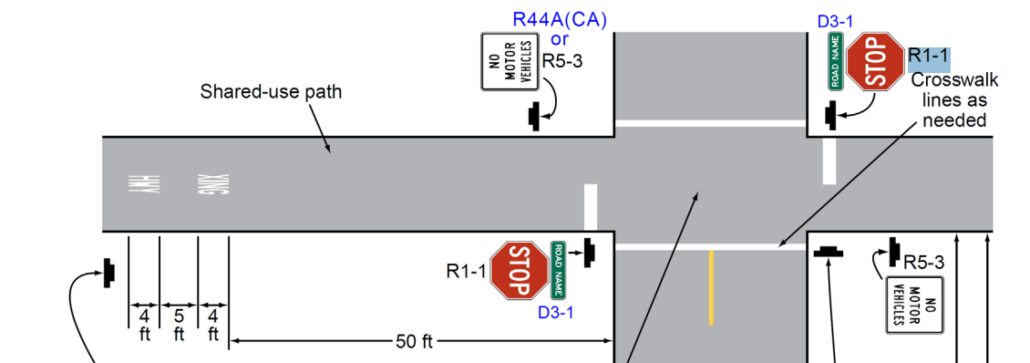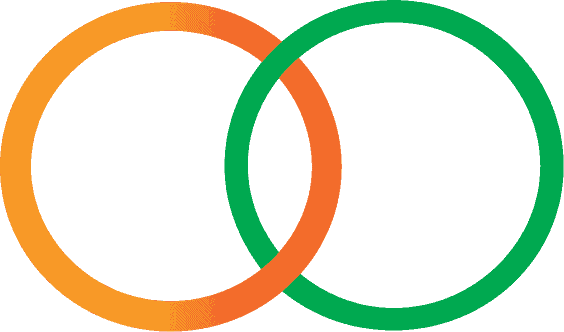What to Expect When You Are Expecting a Bikeway
This post is sponsored by Bike Legal: At Bike Legal, we advocate for protected bike lanes that separate cyclists from motor vehicle traffic. Yet even the best infrastructure cannot remove every danger. We encourage riders to protect themselves by always wearing a helmet and using lights even during the day to increase visibility. Safer streets come from both strong infrastructure and personal responsibility working together. To learn more about how Bike Legal advocates for all bicyclists, check out our blog on bicycle safety, what to do after a crash, and cyclists’ rights on the road.
So you’ve spotted a shiny new bike lane on your commute, or maybe your city just opened a “Class IV separated bikeway” (that’s planner-speak for one with real protection). Fantastic! But then come the signs. Some are obvious, some feel like they were designed by a traffic engineer after their third cup of coffee. Let’s decode them together so you know exactly where you – and your bike or e-bike – belong.
This post leans heavily on the California MUTCD 2014, Part 9: Traffic Control for Bicycle Facilities, which is the state’s playbook for bikeway signs. Let’s take a tour.
Why Bikeway Signs Exist
The MUTCD makes it clear: bike signs aren’t optional decoration. They’re standardized, retroreflective, and placed with intent. Their job is to:
- Define spaces for bicycles and tell motorists when to stay out.
- Warn about hazards that could toss you over your handlebars.
- Guide you through routes, intersections, and crossings.
- Help separate users; walkers, e-bikers, skateboarders
Common Signs and What They Mean

Bike Lane (R81(CA)) – This is the core bikeway sign. It marks where a bike lane begins, continues, or ends. You’ll usually see it at every arterial street or at half-mile intervals on long stretches. It regulates both bicycle and car behavior (Page 1369)

Bicycles May Use Full Lane (R4-11) – This sign makes it clear that bicycles have the legal right to use the entire lane. It’s particularly important on streets without usable shoulders or for e-bike riders moving at traffic speed (Page 1370)

Begin Right Turn Lane, Yield to Bikes (R4-4) – Found where right-turning cars must cross a bike lane. It tells drivers to yield and watch for bicycles in the lane (Page 1369)


STOP and YIELD Signs (R1-1, R1-2) – On shared-use paths, these signs apply to bicyclists at roadway crossings. If you see a STOP sign facing your direction, you’re expected to obey it (Page 1368).

No Motor Vehicles (R5-3 / R44A(CA)) – Typically posted at entrances to bike paths. Some paths also have signage to exclude “motorized bicycles,” which apply to e-bikes, depending on local policy (Page 1370).

Bicycle Warning (W11-1) and Bicycle/Pedestrian Warning (W11-15) – Yellow diamonds that warn of bicycle crossings or shared crossings with pedestrians. They’re often placed before intersections or shared-use path crossings to alert car drivers (Page 1372).

Surface Condition Warnings (W8-10, etc.) – Signs like “BUMP,” “DIP,” or “PAVEMENT ENDS.” They’re meant for bicyclists, warning about conditions that can cause a loss of control (Page 1372).

Bike Route Guide (D11-1, M1-8) – Green directional signs that confirm you’re on a designated bike route. They sometimes include mileage to destinations and function like breadcrumbs across the network (Pages 1373–1374).
–

E-Bikes and Signage
- Speed limits: Some trails and paths set maximum speeds, often around 15 mph, regardless of whether you’re riding a traditional bike or an e-bike.
- No Motorized Bicycles: Signs with this wording may exclude certain e-bikes, particularly Class 3 models (up to 28 mph). Always check posted signs before entering a path (see Page 1370).
Final Thought: Read the Signs, Ride with Confidence
New bikeways can be confusing for riders and drivers. But once you know the signage, you’ve got the inside scoop. Think of these signs as a secret code: crack it, and you’ll always know where you belong.
And hey, the next time you roll past a “Bicycles May Use Full Lane” sign, don’t just pedal nervously on the edge. Sit tall. You’ve got the right to be there. The sign says so.
One last story: remember the old “Share the Road” plaques? They were meant to remind drivers to watch for bikes, but many motorists read them as instructions for bicyclists to get out of the way. The confusion was so common that agencies retired the sign in favor of clearer language. It’s a good reminder that signs evolve, just like our streets. When the message is muddled, engineers sharpen it; when drivers or riders get it wrong, the code gets rewritten.
So read the signs, ride with confidence, and know this: the language of bikeways is still being refined—and you’re part of helping everyone learn how to speak it.


